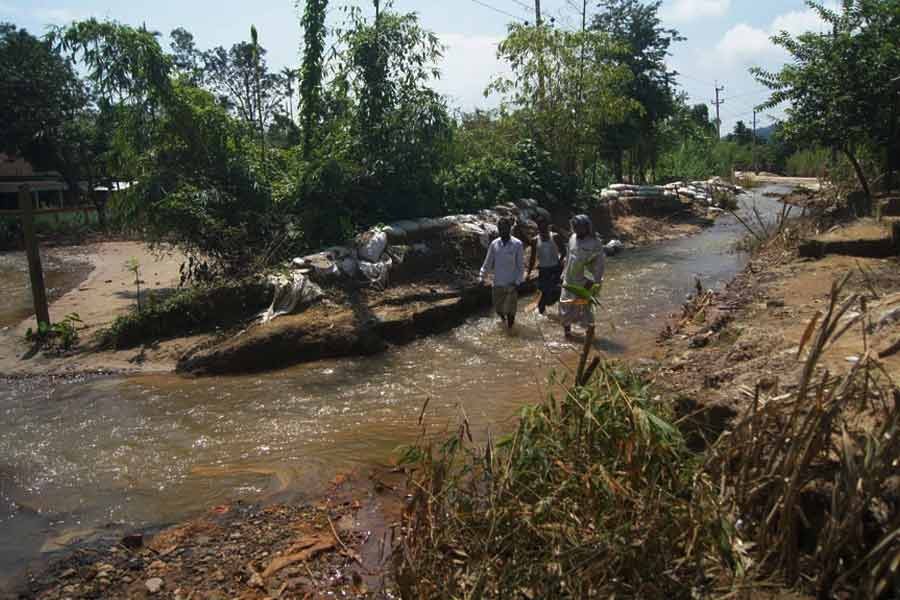Onrush of sands and pebbles from the Indian state of Meghalaya has been a common monsoon phenomenon, quarrying and landslides going with it. It appears, Sunamganj district is at the receiving end of the fallout. This year, with the trail of devastations gone through by villages in the Tahirpur district, signs are there that a new form of natural calamity may be in the making. According to a report in this newspaper, with the crop fields battered by sands overnight, ponds filled with viscous water, roads developing stone-dominant uneven surface and hazardous holes filled with pebbles, the villagers in vast areas are bracing for the worse. The stone and sand deluges this year have left a deleterious impact on the environmental, economic and social aspects of life in the area.
Coming to the damages to crops, a farmer has reportedly rued the losses of over a thousand hectares of paddy, wheat, vegetables and other crops due to the land becoming uncultivable. Two to three feet of layers of sand have covered these swathes. The loss of crops coupled with damages done to the local people's dwellings and other essential public infrastructures couldn't have occurred at a more critical time. The people everywhere have just begun seeing a ray of hope for survival in the receding phase of Covid-19.
Besides, many government and tourist structures have had to bear the brunt of the water streams and pebbles coming down on the lower riparian Sunamganj region. A vital road leading to a tourist spot and the local land customs station have purportedly been buried under sands. There are no large rivers in the region. In fact, a small network of minor rivers features Sunamganj region.
Addressing the situation warrants strong intervention by the Bangladesh Water Development Board (BWDB). Upon being approached by the local people for remedial measures, it appeared to be nonplussed. It said it was aware of the damages caused by the phenomenon of the flows of sand and stones downward in to Bangladesh. The Board is said to be mulling effective steps. The district administration is also far from being prepared to take any proactive stance right now. All the government organisations seen as vital to putting in place an effective work plan are still at various damage assessment stages. On the other hand, the local green activists, including BELA, have underscored the need for immediate measures. They have been pragmatic in asserting that foot dragging will only aggravate the situation. This year's deluges would have passed off as a normal geo-natural freak happening like in the previous years. It is the intensity which has triggered a grave concern in Bangladesh. In essence, a laidback attitude to the problem over the years has brought us to such a pass. It must be supplanted by a proactive initiative at three levels between the two sides: First option is to make a full appraisal of the situation jointly in a bid to devise ways and means for scaling down the fallout. Secondly, border district commissioners could meet to sort out the contours of the problem in a good neighbourly fashion with the BSF and the BGD involved where necessary. Last but not least, we must rise above any denial mode and try to confront the issue at all levels: domestic, neighbourly and diplomatic channels.


